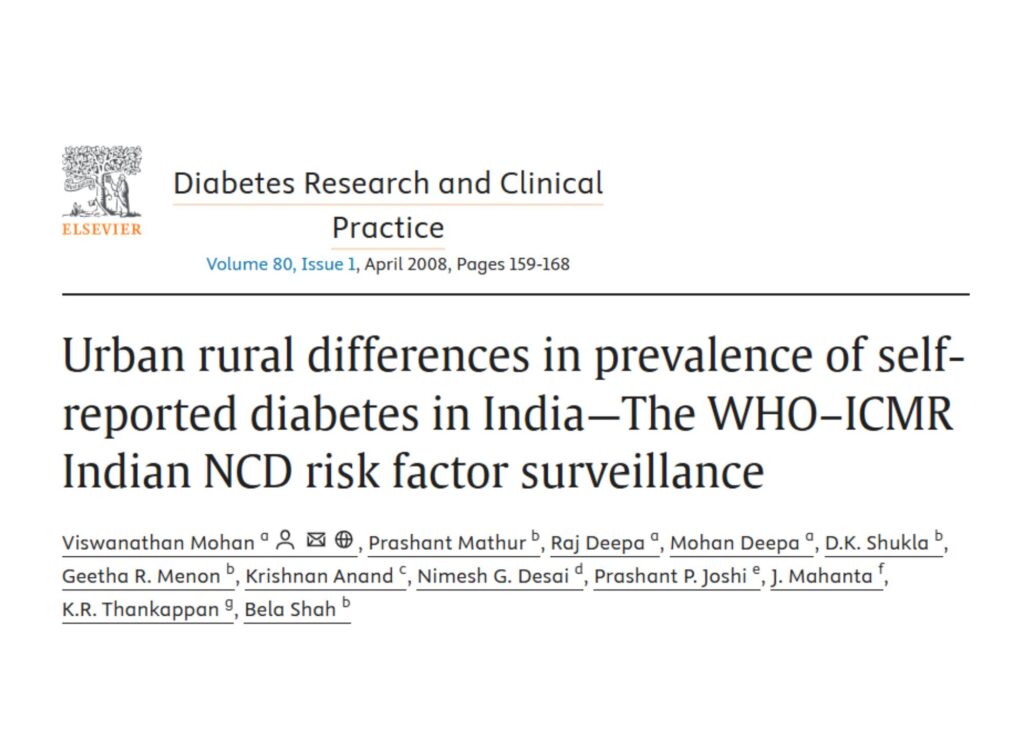A study by Viswanathan Mohan, Prashant Mathur, Raj Deepa, Mohan Deepa, D.K. Shukla, Geetha R. Menon, Krishnan Anand, Nimesh G. Desai, Prashant P. Joshi, J. Mahanta, K.R. Thankappan, and Bela Shah.
At HORUS, we emphasize the role of the built environment in shaping health outcomes, particularly for non-communicable diseases (NCDs) such as diabetes. A landmark study published in 2008, provides key insights into how urbanization impacts diabetes prevalence in India.
The study analyzed data from over 44,500 individuals across urban, peri-urban, and rural areas in India. The findings are striking: self-reported diabetes prevalence was lowest in rural areas (3.1%), slightly higher in peri-urban/slum areas (3.2%), and significantly higher in urban populations (7.3%). Urban residents with abdominal obesity and sedentary lifestyles had the highest prevalence (11.3%), while physically active rural residents with no abdominal obesity had the lowest (0.7%).
These results highlight the impact of urban lifestyles on diabetes risk. Factors such as physical inactivity, increased exposure to processed foods, and limited green spaces contribute to a higher incidence of diabetes in urban settings. Meanwhile, rural environments, where physical labor and traditional diets are more common, appear to offer some protective effects against the disease.
However, the study also emphasizes the need for more comprehensive research to establish stronger causal relationships between urban characteristics and diabetes prevalence. At HORUS, we aim to address these gaps by exploring how urban design can support healthier behaviors and reduce the burden of NCDs in vulnerable populations.
Read the full study to explore the detailed findings and implications for urban health: Urban-Rural Differences in Diabetes Prevalence: Insights from a Nationwide Study in India


